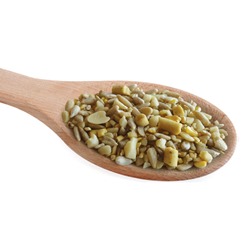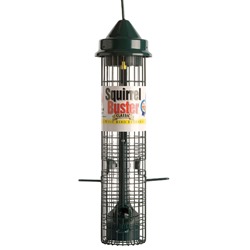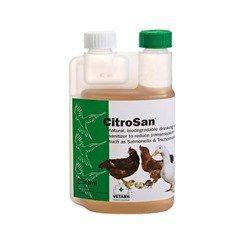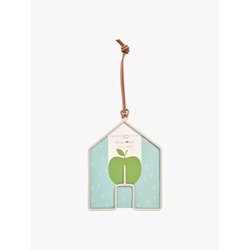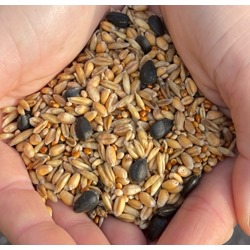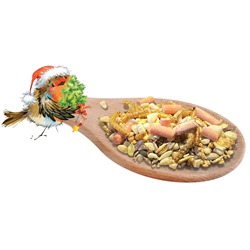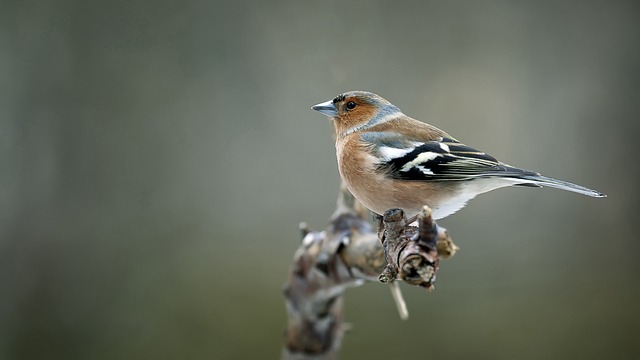
Next on our list of profiles for some of Britain's favourite birds is the Chaffinch! Here we will look at every Chaffinch, from their appearance and their behaviours to their sleeping patterns and the best food for chaffinches to eat. So, if you're looking for a know-it-all guide to one of the UK's most beloved birds, you are definitely in the right place.
About the chaffinch
The common Chaffinch, Latin name Fringilla coelebs, is a small passerine or perching bird, that lies in the same finch family as Goldfinches.
They are one of the most common bird species found in the UK with breeding densities found in southern, central and eastern England as well as on upland edges in northern England and Scotland.
Chaffinch identification
Of all the finches in the UK, the Chaffinch is the one that possesses the most colourful plumage, however, male and female Chaffinches differ greatly when it comes to their colour. The male Chaffinch is well-suited for camouflage while eating on the ground, with its bright pink breast only on display during flight.
They boast arctic-white streaks on their wings that contrast greatly with the rest of the wing which is black. Their crown is a gorgeous grey-blue colour that complements the pink hue of their breast and face with the rest of their body showing off a shade of brown that flows into a stunning green and then into a light grey towards the end of the tail.
The female Chaffinch, on the other hand, is slightly duller when it comes to its colour. Displaying an olive-green back and grey-brown breast.
The vibrant colours of the males' feathers become more prominent during the breeding season when they begin to attract more plain-looking females. Young Chaffinches look like females but are slightly smaller in size.
Chaffinch behaviour
Chaffinches are peculiar birds and have been subject to a fair amount of scientific research thanks to their beautiful singing voices. It's very common to hear a Chaffinch before you see it, because of their loud and varied calls.
In the UK, Chaffinches choose to stay under the cover of hedges or bird tables, the places they are most likely to be found eating. In terms of their nature, chaffinches are quite shy and generally will not openly feed on bird feeders.
During the autumn, UK Chaffinches are joined by a large number of Chaffinches from Finland and Scandinavia. In just a few years, these migrant birds can almost double the UK population. If large flocks are ever seen flying through the countryside, these are typically continental birds. Smaller flocks or individual birds are usually local resident Chaffinches.
Chaffinch breeding
Breeding for Chaffinches typically starts in late April but is largely dependent on the Springtime temperatures and can continue all the way until the latter parts of July.
Here, males attract females to their breeding territory using their birdsong. Once paired, the female Chaffinch will build a nest with a deep cut in the fork of a tree, which is typically very well camouflaged and hard to spot to the untrained eye. Chaffinch nests are made up of a variety of materials that include lichen, grass, cobwebs and moss and will be lined with rootlets and feathers.
Clutches are often made up of around five eggs which are laid in the early morning at daily intervals. The eggs are incubated for around a fortnight by the female Chaffinch before fledgelings hatch. These are fed by both males and females.
What do chaffinches eat?
What is the best food for chaffinches? Chaffinches eat different types of food at different times of the year.
During the breeding season, the Chaffinch will mainly feed on invertebrates such as earwigs, aphids and spiders with their young feeding on caterpillars and insects. They hunt their prey by searching in trees and sometimes even by catching flying insects mid-flight.
When it's not breeding season, the best food for chaffinches is seeds. As they are ground feeders, you are likely to see them feeding on seeds that have fallen from feeders onto the ground.
Shop Ground Feeders >
Best food for chaffinches
Here are some of our top picks if you're interested in purchasing chaffinch food to put in your garden. Click the links below to shop:
And there you have it, our guide to the UK Chaffinch! If you have Chaffinches near your home and would like to feed them, or maybe you'd like to attract some to your garden, be sure to check out our selection of food for chaffinches.
If you have any questions regarding Chaffinches or how we can help you attract these gorgeous birds to your garden, please do not hesitate to get in touch with a member of our helpful team today - we'd love to hear from you!
Contact Us >
 Bird Feeders
Bird Feeders  Seed Feeders
Seed Feeders Peanut Feeders
Peanut Feeders Peanut Butter Feeders
Peanut Butter Feeders Suet & Fat Feeders
Suet & Fat Feeders Window Feeders
Window Feeders Hanging Feeders
Hanging Feeders Feeding Stations
Feeding Stations Ground Feeders
Ground Feeders Easy Clean Feeders
Easy Clean Feeders Bird Tables
Bird Tables Seed Trays
Seed Trays Bird Baths & Drinkers
Bird Baths & Drinkers Feeder Accessories
Feeder Accessories Feeder Hygiene
Feeder Hygiene Squirrel Proof Bird Feeders
Squirrel Proof Bird Feeders For the Kids
For the Kids Niger Seed Feeders
Niger Seed Feeders Mealworm Feeders
Mealworm Feeders Bird Food Storage
Bird Food Storage Fat Ball Feeders
Fat Ball Feeders Tube Feeders
Tube Feeders













